- Complete a Camino de Santiago
- Green coastlines, hidden beaches and endless forests inviting to reflection and relaxation
- Numerous places of historical significance and cultural monuments related to the history of the Camino and modern Spain.
- Maind-blowing gastronomic culture based on seafood and the best produce of local farmers
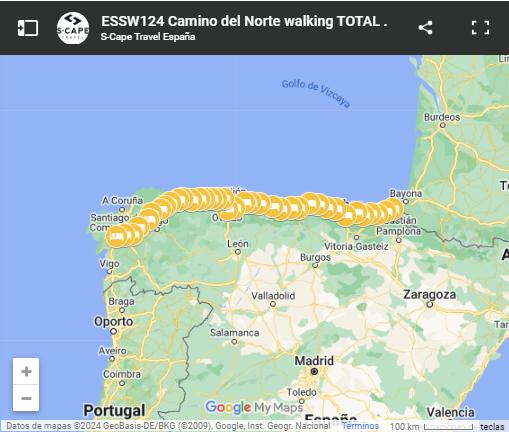
San Sebastián (Donostia in Basque) is a refined city focused on offering the enjoyment of all the senses: its gastronomy, the Concha beach, the Basque culture, a great film festival ... In the city there is no shortage of places to visit; the old port district, take a dip in the Concha beach or stroll through the 19th century Ensanche district which is now the fashionable district for shopping. Did you know that San Sebastian has the highest density of Michelin stars in the world? Make sure you book well in advance if you want to dine at one of these fancy restaurants.
San Sebastián is easy to reach from Bilbao airport, as there is a direct connection to San Sebastián.
Today you have the option of leaving from Irun or opt for the alternative of leaving from the hermitage of Guadalupe in Hondarribia. You will start a beautiful journey through the foothills of the Jaizkibel mountain, heading to San Sebastian. At the end, a small ferry will take you across the Oyarzun river in Pasaia.
Challenge: 23,6 km / 14.6mi, 705m ascent, 248m descent
Your journey along the Camino del Norte continues as you head to Zarautz, a charming coastal town. The trail meanders through lush green hills with isolated farms and some wooded areas, providing now and then magnificent views of the ocean. After the descent to Orio, a small town at the river mouth of the river Oria with a peculiar church, a final steep ascent and descent awaits before you reach Zarautz; another vibrant town with a beautiful beach where you'll have the chance to relax and rejuvenate by the water.
Challenge: 22.8km / 14 mi, ascent 516m, descent 511m
The road takes you through the vineyards of Txacoli, a sparkling white wine that is produced in the hills between Zarautz, Getaria and Zumaia and combines very well with the magnificent seafood dishes served in this area. The first 9 km stretch to Zumaia is very easy to walk, so it can be done in 2,5 - 3 hours. But better not to taste the wine during lunch, as we have included a spectacular detour to Deba along the exposed GR-121 coastal path, passing through the Flysch GeoPark. Most pilgrims opt for this detour to Deba because it is much more interesting and 1.5 km shorter than the official Camino further inland, although a bit more demanding in terms of ascent/descent and trail type.
Challenge: 20,5 - 22km / 13.6 - 12.7 mi, 833m ascent, 838m descent
NOTE: if you have time to add an extra night in the middle of this trip, we recommend to book it in Zumaia, in order to fully enjoy the coastal footpaths, beaches and gastronomy, and have some days of relative rest before doing the last 3 challenging stages. Please indicate this on the booking form and we will make also the necessary arrangements for the luggage transfers.
In Deba, the Northern Way turns its back on the friendly and touristy coast of Guipuzcoa to enter the wooded hills of Vizcaya. This region is deeply rooted in the Basque rural tradition of mixed farming in isolated family farms, although its capital Bilbao was marked by industrialization during the 19th and 20th centuries due to the mining and metallurgical industry further inland. After crossing the Deba river you will start directly with a steep climb up to the Olatz valley, where you will have a last chance for coffee and pintxo before heading into the deep woods and following mostly gravel and forest tracks for hours. At the other end of the forest awaits Markina-Xemein, a lively town with an ancient history, as evidenced by the peculiar hermitage of Sant Miguel de Arretxinaga, built around 3 monoliths.
Challenge: 23,8 km / 14.7 mi, 777m ascent, 698 m descent
Your pilgrimage leads you further into the heart of Vizcaya, to Gernika, a town with a rich history and cultural significance. It’s the home of the Tree of Gernika, a symbol of Basque identity, and also famous for being the inspiration for Picasso’s painting Gernika after German and Italian allied troops bombed the town in 1937, during the Spanish Civil War. Although this town (due to the bombing) has no cozy old city center, it is a memorable stop on your journey.
Challenge: 26 km / 16 mi, 624 m ascent, 691m descent
On your last walking day, you continue towards Bilbao, the largest city on the route. You will experience the landscape transitions from rural to urban approaching the city. To avoid an industrial section on the sidewalk of a busy road, we advise to take a bus (or taxi) after 16.2 km in Larrabetzu to Zamudia and reduce the total of 30,9 km to 25 km. Or have the bus take you all the way to Bilbao, although the entrance into town on foot is surprisingly beautiful and entertaining and you might no want to miss this part.
Challenge: 30,9km / 19.2mi, 765m ascent and descent
You can also visit the Guggenheim Museum, enjoy a stroll through the old town or do a pintxos tour through the historical centre! What a better way to start the Camino than tasting the amazing Basque gastronomy!
Your Camino starts with this first urban section of the Camino between Bilbao and Portugalete along the river bank of the Nervion to the famous hanging bridge Puente Vizcaya in Getxo. You take the bus back into town.
Challenge: 13 km / 8 mi and totally flat
After a short transfer your route today starts in Portugalete or Sanfuentes. From there, a long asphalt bike path will take you to the beach of La Arena, where you can have breakfast before leaving the Basque Country behind and crossing into Cantabria. You start with a spectacular stretch of the Bay of Biscay. The Camino del Norte will take you to discover impressive cliffs and beautiful panoramic views of the Cantabrian Sea, all the way to Ontón. Here there is a rather boring stretch along the national road until you reach Mioño and continue along the coastal path to your hotel in Castro Urdiales, a town with a port as beautiful as it is rich in history. Take your time to explore its streets and taste the local seafood.
Note: If you prefer to save time and effort, you can ask the cab driver to drop you off in Sanfuentes and skip the first few kilometers, which are partly uphill.
Challenge: 28,6 km / 16.6 mi, 529m ascent and descent
Today your journey continues along the north coast, starting with a small transfer to Cérdigo or Rioseco de Guriezo to avoid some boring stretches, with the beauty of the Cantabrian Sea as a backdrop. It is an interesting stage of great scenic beauty, with several beaches, cliffs and stretches of forest, alternating with very green inland valleys. The route is a continuous up and down, but the slopes are gentle and bearable. Laredo, your destination today, is a town known for its golden sandy beaches, a great place to relax, recharge your batteries and enjoy the refreshing sea breeze.
Challenge: 26 km / 16.1 mi, 455m ascent, 596m descent
The path you will walk today winds through lush landscapes and charming villages, crossing at the beginning three long beaches: Salvé (in Laredo), Berria (after Santoña) and Helgueras-Trengadín (in Noja). You will reach the Puntal de Laredo and from there you have to take a boat to Santoña to reach the other shore and follow the Camino. After Berria, you will turn inland to the Siete Villas Castle and continue quietly until you finish the day in Güemes, where you can take a break and relax among green and quiet landscapes. This stage is a long stage, but it also has fewer steep climbs.
Challenge: 25,8 km / 16 mi, 288m ascent, 242m descent
Today's route is the final route. Today you will have a nice and easy stage with few climbs, which will allow you to spend the afternoon on the beach of Somo or visiting the city of Santander, capital of Cantabria. The ferry leaves you right in the center of the city and very close to the art museum Centro Botin. Santander offers a mix of culture, history and natural beauty, making it a perfect end point for your pilgrimage.
Note: The total distance of this route will depend on where you take the boat (it can be in Somo or Pedreña), on the other hand it will also depend on the area of Santander where you stay (city center or Sardinero beach) and finally if you make a detour in the morning through the Chapel of San Julian, a small pilgrim shrine dedicated to the priest of Güemes.
Challenge: 20,7 km / 12.8 mi, 188m ascent, 240m descent
Leaving behind the hustle and bustle of Santander, you will start a fairly long route that passes through urbanized areas, taking advantage of pedestrian lanes. Even so, the landscape is quiet and you will feel transported to another era when you reach the charming medieval village of Santillana del Mar, one of the most beautiful in Cantabria, where the Romanesque collegiate church of Santa Juliana and the famous Altamira caves stand out.
Note: we strongly advise to take a train from Santander to Mortera or Boo de Piélagos to avoid a very boring section through Santander and hence save up to 15 km of walking.
Challenge: 36 km / 22.5 mi, 400m ascent, 320m descent
Today's route is quite pleasant and interesting, as it combines inland landscapes with two short detours by the sea, which will take you to Comillas. This town became at the end of the 19th century a summer destination for the aristocracy and the high bourgeoisie. The route passes between beautiful green hills, offering breathtaking views of the Cantabrian coast. In Comillas, you will fall in love with the modernist buildings, such as “El Capricho”, one of the first works of Antoni Gaudí.
Challenge: 22 km / 13.5 mi, 460m ascent, 520m descent
Continuing your pilgrimage, you head towards Colombres, following a rural route that takes you to the next province, Asturias. You will cross several bridges over marshes and estuaries, and some long and sandy beaches. Halfway you will cross San Vicente de la Barquera, a fishing village with a interesting historical legacy. Once you enter the province of Asturias by crossing the river Deva, you will check in at your welcome agroturismo, close to Colombres
Challenge: 28km / 17.5 mi, 460m ascent, 520m descent
After a hearthy breakfast you climb up the hill to the town of Colombres which has a great number of so-called Casas de Indiano, huge villas built in a neo-colonial style. Leaving Colombres, the Camino takes you first to the coastline where the ocean has carved out holes and caves in the limestone cliffs, allowing for spectacular 'bad-weather geisers' (the so-called bufones ) to emerge when the sea is rough. Along the way you'll find in Pendueles and Andrín, typical villages with bars before you walk into the mediaeval town of Llanes, with a beautiful gotic church, right next to the marina and fishing port with an artistic breakwater created by the basque painter Agustín Ibarrola
Challenge: 23km / 14.3 mi, 320m ascent, 400m descent
The first half of this route, which is relatively long but with fairly gentle slopes, passes through the beaches of Palombina, Torimbia and San Antolin. All of them are very nice and quite crowded during the summer. The route then heads inland again, passing through rural areas with less tourism. After crossing several railway crossings, you will end the day in Ribadesella, a famous coastal town known, among other things, for its caves with prehistoric paintings.
Note: If you prefer, you can split this day in two, going alone to the town of Nueva and spending the night there to continue the next day to Ribadesella. This means an extra night of stay, so you must let us know at the time of booking the trip.
Challenge: 32 km / 19.8 mi, 330m ascent and descent
Today's route will take you through very interesting landscapes, with mountains and breathtaking views of the coast. At every step you will discover natural corners of great value and you will pass by several beaches: Santa Marina (in Ribadesella), La Vega, Arenal de Morís (a little far away), La Espasa and La Isla. At the end of the route, the small town of Colunga welcomes you. It's one of those towns where the recent popularity of the Camino del Norte has given the local economy a small boost and compensates for the decline in agricultural activity..
Challenge: 20 km / 12.4 mi, 340m ascent, 330m descent
Today's route is short and will take you through orchards and farmland, away from the coast and into the agricultural heartland of Asturias. You will pass through more mountainous terrain than on previous days and through small rural villages. Your destination is Villaviciosa, the cider capital, famous for its cider production.
Challenge: 18 km / 11 mi, 310m ascent, 320m descent
Today you will go into the interior of Asturias, away from the coast. Leaving Villaviciosa behind, you will cross the Asturian hills and arrive in Pola de Siero, a lively market town. You will go from a quiet rural landscape to an energetic urban environment. This change will give you a unique and enriching experience.
Challenge: 26 km / 16.1 mi, 530m ascent, 320m descent
Today's route is short and ends in Oviedo. The final stretch will take you through beautiful villages and fairytale forests until you reach the capital of Asturias, where you can delve into the history and culture of the region. Visit the spectacular Oviedo Cathedral and enjoy the local gastronomy in one of the many restaurants or cider houses in the city.
Challenge: 17 km / 10,5 mi, 190m ascent, 170m descent
This transition stage to continue the Camino del Norte along the coast is little travelled by pilgrims. Today you will start in Oviedo and your route will take you to the coastal city of Avilés. Leaving the Asturian capital behind, you will walk along the paths of Mount Naranco, a place where you can enjoy an attractive mix of urban and rural landscapes as you walk. Arriving in Avilés, you will be greeted by its charming old town and the avant-garde Niemeyer Centre, a symbol of art and culture in the region.
Challenge: 29 km / 18 mi, 370m ascenst, 590m descent
Your adventure continues along the coast, on a route with frequent but mostly moderate gradients, which will take you to Muros de Nalón. Along the way, you will be able to enjoy panoramic views of the sea in several sections and enjoy the authentic traditional Asturian architecture. However, the most impressive views await you on the banks of the river Nalón, where the majestic Castle of San Martín, perched atop a hill, watches over the Camino with imposing serenity.
Challenge: 23 km / 14.2 mi, 560m ascent, 450m descent
From Muros de Nalón, you will enter the beautiful Asturian inland landscape on your way to Soto de Luiña. It is a short section with gentle climbs and descents, ideal for taking it easy and enjoying stops such as the palace of La Quinta de Selgas. The only time you will get close to the coast is at Concha de Artedo.
The green landscapes and quiet roads will make you feel at peace and in tune with nature. Soto de Luiña is the perfect end point for this stage, and if you have any strength left, you can go to the beach of San Pedro, which is only 2.2 km from the village.
Challenge: 15 km / 9.5 mi, 430m ascent, 540m descent
Taking the ‘Camín Real de Las Ballotas’ along the coast, one of the most beautiful stages of the Camino del Norte awaits you. This coastal route has spectacular views of the cliffs and access to beautiful beaches, is well signposted and has several services. As you go along, you will pass through several towns in the council of Cudillero, such as Albuerne, Novellana, Castañeras with its Playa del Silencio beach, Santa Marina and Ballota. After passing Ballota, you will go down a path that crosses the river Cabo through a stone bridge, and finally you will arrive to the beautiful village of Cadavedo, known for its impressive beaches and its quiet atmosphere.
Challenge: 19 km / 12 mi, 580m ascent, 510m descent
Today's stage is short and pleasant, although there is a small challenge with the climb from El Canero, which has a gradient of 140 metres in 1.6 km. You should head towards Luarca and cross the river Esva, which rises in the Sierra de Tineo and flows into the Cantabrian Sea. At the end of the route, when you reach Luarca, you will be greeted by spectacular views of the town. This pretty coastal spot is known for its whitewashed buildings, its fishing port and its natural beauty. Luarca invites you to discover its rich maritime history and enjoy its stunning scenery.
Challenge: 15 km / 9.5 mi, 220m ascenst, 300m descent
Today your route will take you a little away from the coast, walking along gentle tracks and paths, surrounded by hills and quiet forests. Along the way, you will pass through several villages with services, including the pretty hamlet of Hervedosas, which has just four houses and is the last one before reaching the Concejo de Navia. Afterwards, you will take a left turn towards Casa Carmina, where pilgrims can refresh themselves in a fountain before continuing towards Villapedre. Finally, you continue on until you reach Navia, a town with an industrial and coastal character.
Challenge: 20 km / 12.5 mi, 360m ascent, 350m descent
Your journey goes along the coast, taking you through beautiful places and charming villages until you reach Tapia de Casariego. Along the way, you will enjoy spectacular sea views and quiet beaches. Tapia de Casariego, known for its fishing traditions and beautiful harbour, is the ideal place to relax and take a break from your pilgrimage.
Challenge: 21 km / 13 mi, 280m ascent and descent
Today you will walk through idyllic landscapes, always along the coast, overlooking the impressive cliffs. Highlights include Peñarronda beach and Arnao beach, famous for ‘La Hollina’, a natural pool that appears at low tide, as well as its fossil platform that forms a fascinating reef.
After crossing the river Eo, you will leave Asturias and enter Galicia, the region that is home to Santiago. Ribadeo, with its beautiful estuary and great atmosphere, is the perfect destination to finish your Camino.
Challenge: 12 km / 7.5 mi, 110m ascent, 100m descent
In this stage you will enter Galicia, leaving the coast behind to begin your journey inland, heading towards Santiago de Compostela. The landscape changes from coastal paths to a mountain route that will take you through a rural and sparsely populated area. The most notable climb of the day will be when you leave A Ponte de Arante: a climb of 260 metres over 5 kilometres, before you reach Gondán.
From Gondán, a taxi will take you to Mondoñedo, where you can rest, as the area is very sparsely populated and has no accommodation options.
Challenge: 21 km / 13 mi, 600 m ascent, 450 m descent
A taxi will take you back to Gondan, where today's route begins. It is a relatively straightforward route, with only a couple of steep climbs and many spectacular views. On the way, you will pass through Vilanova de Lourenzá, where the old monastery church is a must-see. Your journey will end in Mondoñedo, a town steeped in history, which has been the capital of the region of A Mariña Central and the episcopal see since the Middle Ages. The cathedral of Mondoñedo and its old town, declared a Historic-Artistic Site, are the cultural gems that await you on this stage.
Challenge: 16 km / 10 mi, 450m ascent, 510m descent
This route is very interesting, as it leaves behind the region of A Mariña to Terra Chá, the inland plateau of Lugo, ascending from 140 to 560 metres above sea level. The route takes you through rolling hills and agricultural landscapes, crossing the valleys of Valiñadares and Lousada, giving you a real glimpse of the rural beauty of the region. After passing through Lousada, where you can explore its old lime kilns, you will continue through A Xesta and then through Gontán, heading for Abadín.
Challenge: 17 km / 10.5 mi, 630m ascent, 250m descent
It is a very pleasant route, with interesting landscapes and little gradient. You will walk along comfortable dirt or tarmac tracks between green meadows and forests of native trees in the region of A Terra Chá, which covers several municipalities in the province of Lugo. This area, together with the upper reaches of the Miño river, was declared a Biosphere Reserve by UNESCO in 2003. Its terrain is rugged and livestock farming is the main activity. As you progress on your pilgrimage, you will reach Vilalba, a town known for its medieval heritage.
Challenge: 21 km / 13 mi, 250m ascent, 290m descent
Today's route is a short but very varied one: tracks, dirt roads, paths and even muddy corredoiras (tractor tracks). All of this in a charming rural setting, very pleasant and with hardly any gradients. The route will take you to Baamonde, a small and pretty village surrounded by lush vegetation. This landscape is ideal to enjoy a quiet and relaxing pilgrimage.
Challenge: 19 km / 12 mi, 210m ascent, 270m descent
Today you have the option of choosing between two routes, depending on the distance you would like to cover. Both options will take you along dirt or tarmac tracks through a rural and peaceful landscape, where family livestock predominates.
No matter which route you choose, we will have a transport service available to take you back to your hotel in Regüelas.
Challenge: 20,2 km / 12.5 mi, 600m ascent, 400m descent
Today, the hotel where you are staying will organise transport to take you to the start of the new stage. You can choose between two suggested starting points to reach Sobrado dos Monxes. On this day, which has a fairly steep profile, you will climb gradually until you reach the highest point of the entire Northern Way.
Challenge: 23.8 km / 14.7 mi, 400m ascent, 200m descent
You can opt for a shorter option: 15.6 km / 9.6 mi, 600m ascent, 400m descent
In contrast to previous routes, which took you along dirt tracks between villages, today the landscape becomes more urban as you approach Santiago. The route ends in Arzúa, the starting point of all activity on the French Way.
Challenge: 22 km / 13.5 mi, 220m ascent, 340m descent
At first sight, this stage may seem a little monotonous due to its proximity to the main road. However, it turns out to be one of the most exciting days of the week. You will find yourself surrounded by a hustle and bustle of enthusiastic pilgrims, excited to reach the finish line. Also, as it is a relatively short day, you will have time to relax at the hotel and enjoy the peaceful surroundings.
Challenge: 18 km / 11 mi, 200m ascent, 230m descent
You return to modern life as you speed past the regional airport and cross the motorway, the railway and the ring road, all the while heading towards a huge and irresistible magnet: the Plaza del Obradoiro. The urban bustle will not distract you. Historically, pilgrims used to stop at Monte do Gozo to have a look at the city and then make a last stop at the Lavacolla fountain to cool their faces and feet before meeting their beloved saint.
Challenge: 21km / 13 mi, 350m ascent, 370m descent
Your trip comes to an end in the morning after breakfast. If you wish, you can choose to stay one more night in Santiago de Compostela.
The hotels included in this trip have been carefully selected taking into account not only their location and quality, but also their charm and exclusive services. All rooms have private bathrooms
For this trip we have standard hotels. Should any of them be fully booked, we will replace it with another of similar characteristics and you will be informed about the alternative accommodation booked.






































You can start on any day of the week, subject to availability, between Abril 1st and October 15th.

The nearest airport is Bilbao (BIO)

The nearest international train station is Hendaye, on the border with France. From there you can travel by bus (www.alsa.com) or local train (www.renfe.com) from Irun to San Sebastian, called Donostia in Basque

GPS tracks area available upon request.
Included
- 38 nights' accommodation with breakfast
- Luggage transfer * (1 piece per person, max. 18 kg)
- Digital maps and detailed route notes in English
- Access to the trip on GUIBO
- Pilgrim passport
- 24-hour telephone assistance
*During high season, it must be left everyday by 8:00 hrs although you leave later
Not included
- Lunches and dinners
- Flights
- Travel insurance
- City taxes (may apply in Santiago)
- Transfers by public transportation
- Transfer to first/ from last accommodation
- Personal expenses such as drinks, phone calls, tips, extra transfers, etc.
- Any items that have not been specifically mentioned in the programme
Extras
- Extra nights at any of the accommodations of the programme








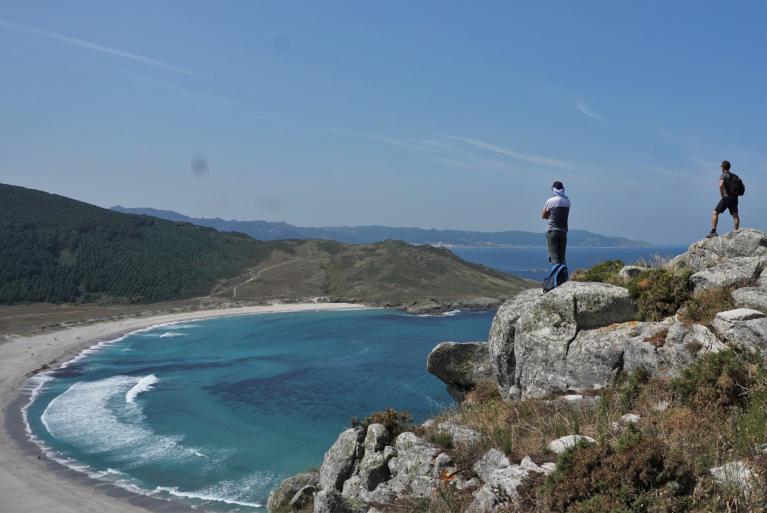

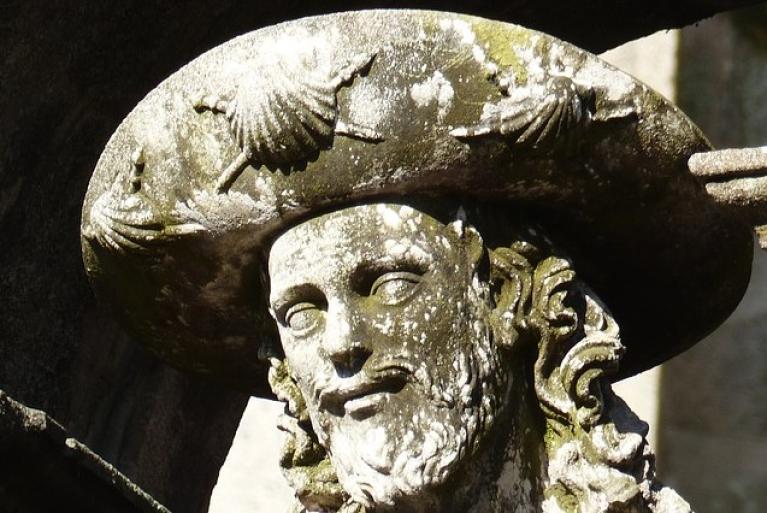
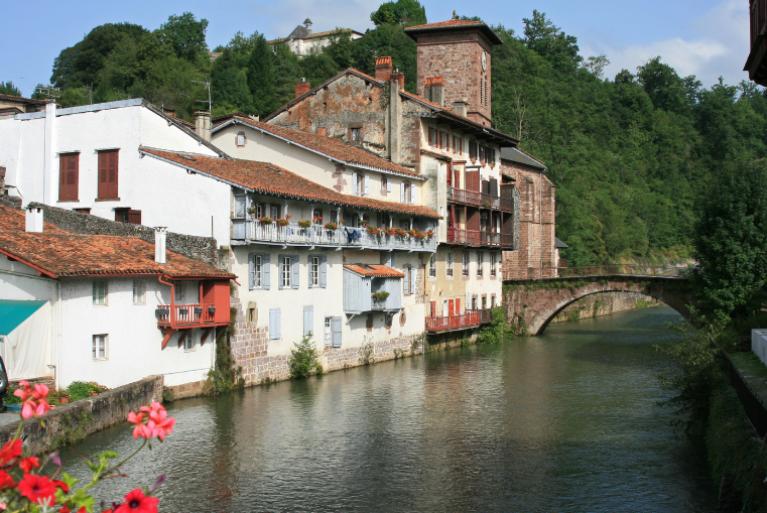
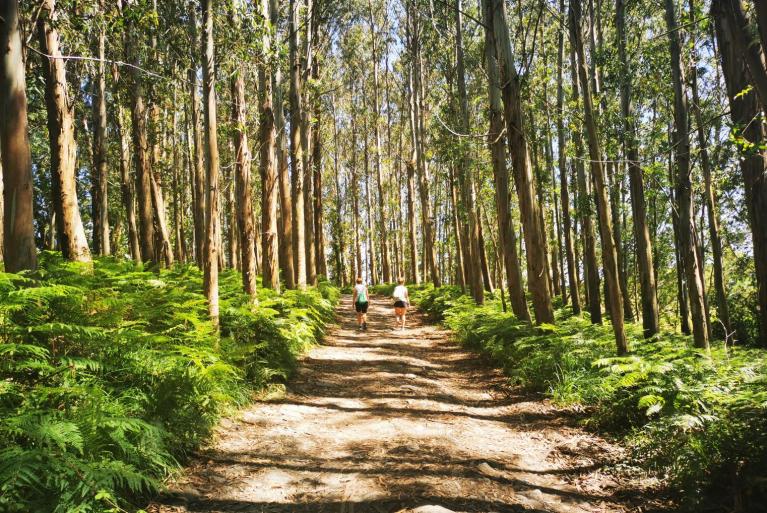



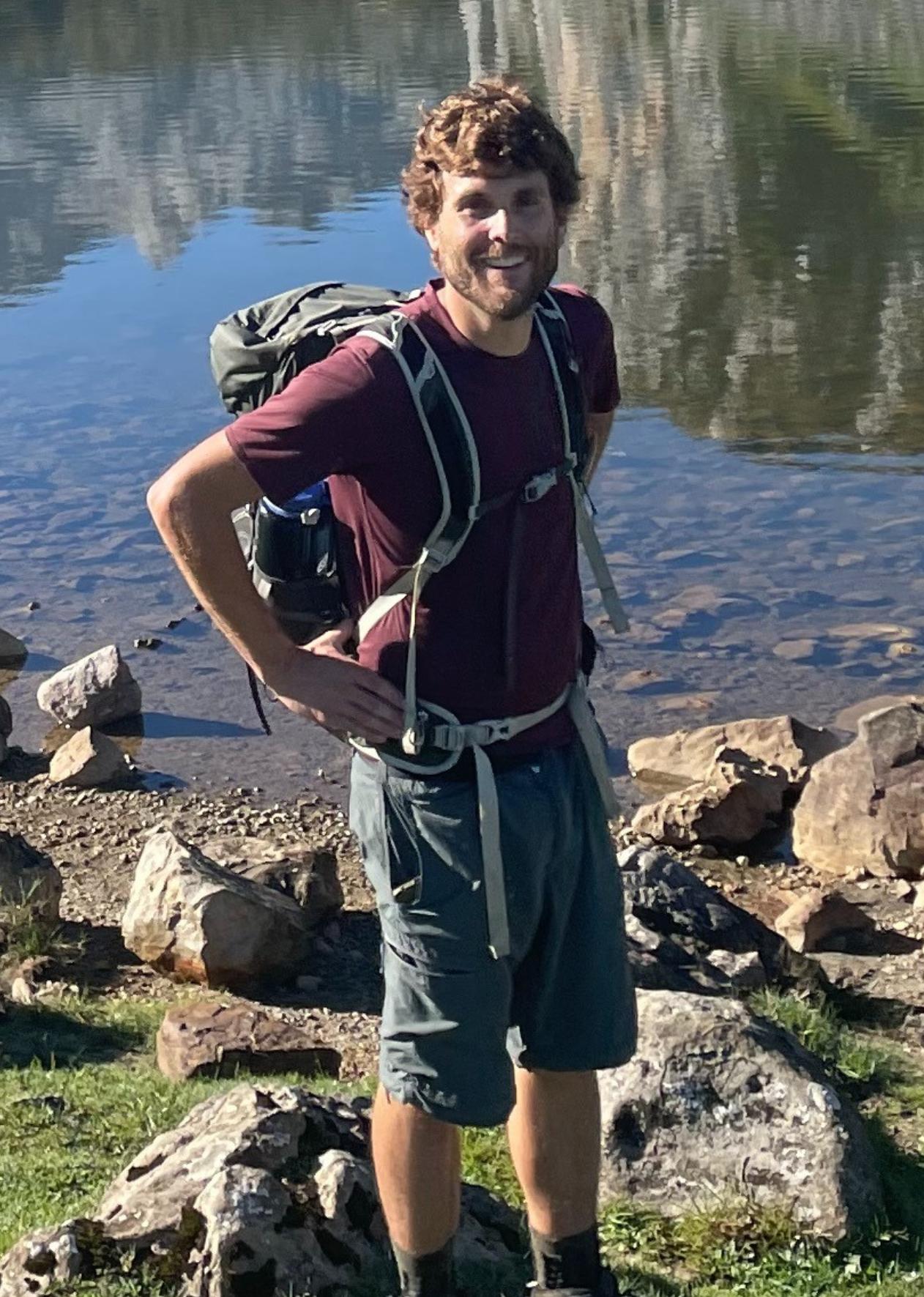


Opening hours: Mon-Fri 9:00am – 6:00pm (CET)
Opening hours: Mon-Fri 9:00am – 6:00pm (CET)